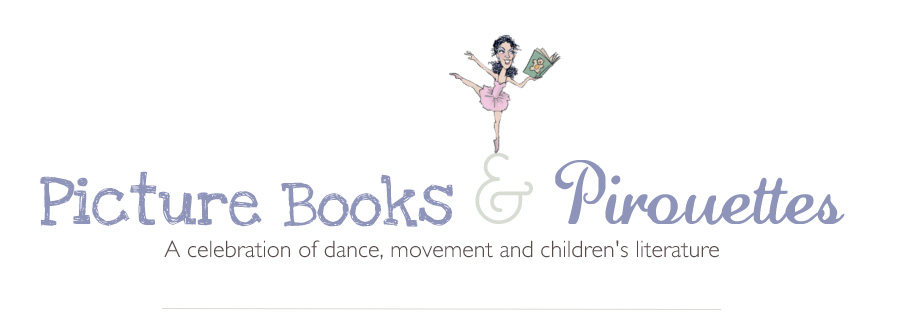With so many picture books out there about ballet, it was refreshing to discover a relatively new picture book with a tap dance theme. But I have to admit that Tip-Tap Pop is not exactly what I expected.
The book does begin on a happy note. Emma's Pop had taught her to tap dance when she was very small, and the two still love to dance together -- back-flapping at the farmer's market, dig-shuffle-chugging through town, and putting on a special show for the family every year on Emma's birthday.
But one year, as summer Popsicles melted down sticky fingers, slowly...Pop stopped dancing. Soon, Pop forgot his reading glasses. He forgot to walk the dog. He even forgot Emma's birthday.
As Pop forgets more and more, Emma doesn't feel like dancing anymore. While the other students in her dance class continue to dig-chug-chug, she can only clunk-stomp-thud. But, as Emma realizes that she can use dance as a tool to stay connected to Pop, the hop in her step slowly returns.
I know that dance serves as a sort of therapy for me at times. If I'm too excited, it calms me down. If I'm feeling down, it excites me. If I'm just stressed out and need a break, it offers me that as well.
When I was in college, it took me a while to decide which career path to follow. I minored in psychology and was fully immersed in dance at the time, so for a brief period I considered going into the field of dance therapy.
The American Dance Therapy Association (ADTA) defines dance therapy as "the psychotherapeutic use of movement to promote emotional, cognitive, physical, and social integration of individuals." In Tip-Tap Pop, I think dance served as a type of therapy for both Emma and Pop.
ADTA is an incredible source of information about dance therapy and its many applications, including the prevention and treatment of Alzheimer's disease. If you are interested in learning more about this, ADTA has an info sheet specifically on Dance/Movement Therapy & Alzheimer's Disease. The international medical journal Student BMJ has also published an overview of the topic.
Tip-Tap Pop would obviously be appropriate for a child with a grandparent who is suffering from any type of dementia, but it has characteristics that make it appealing to a much wider audience as well. For instance, the book is full of great tap dancing sounds, and I love how the author uses the sounds of Emma's feet to represent her mood. Another thing I like about this book is that it is realistic in showing that childhood isn't all fun and games...and that adults aren't the only ones who experience (and overcome) low points in their lives.
What first attracted me to the book and what impresses me the most about it are the illustrations. There is something about the prominent blues and greens in the gouache-and-pencil drawings that continue to draw me in. Maybe it's because these "cool" colors set such an appropriate tone for the book. The faces in the illustrations are also some of the most expressive I've seen. They make me feel like I am right there with Emma and Pop, feeling what they are feeling, in every scene...



No comments:
Post a Comment